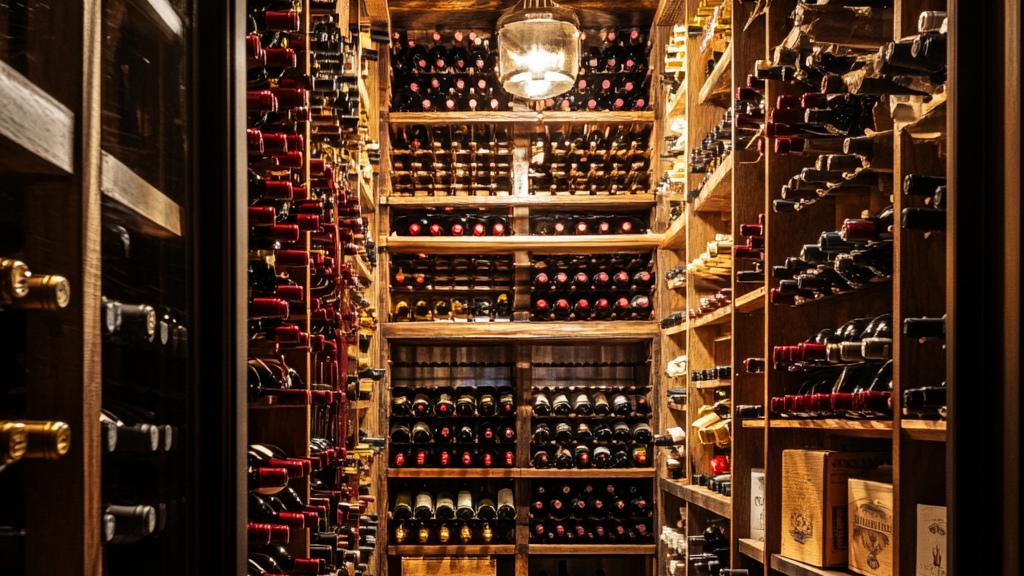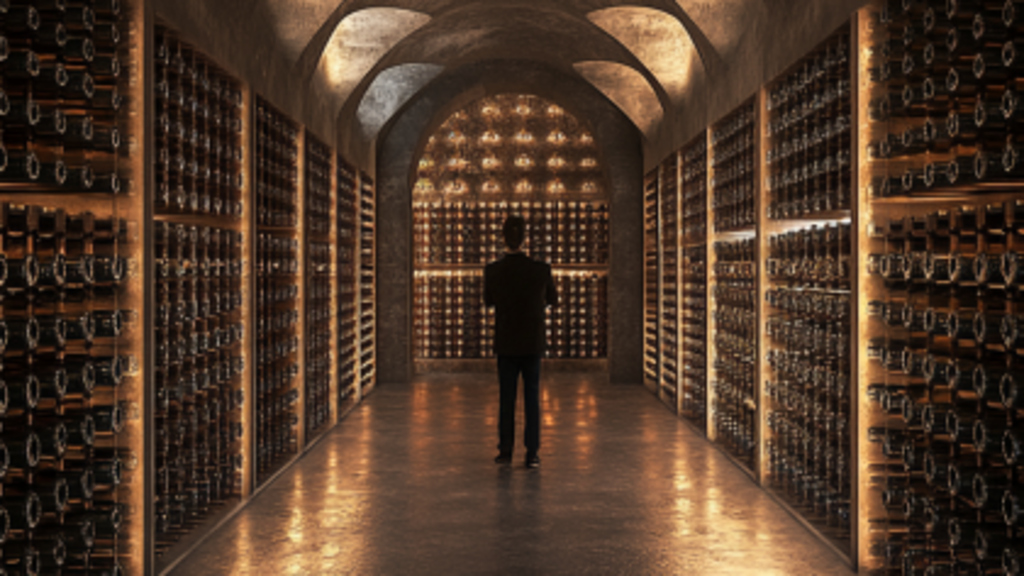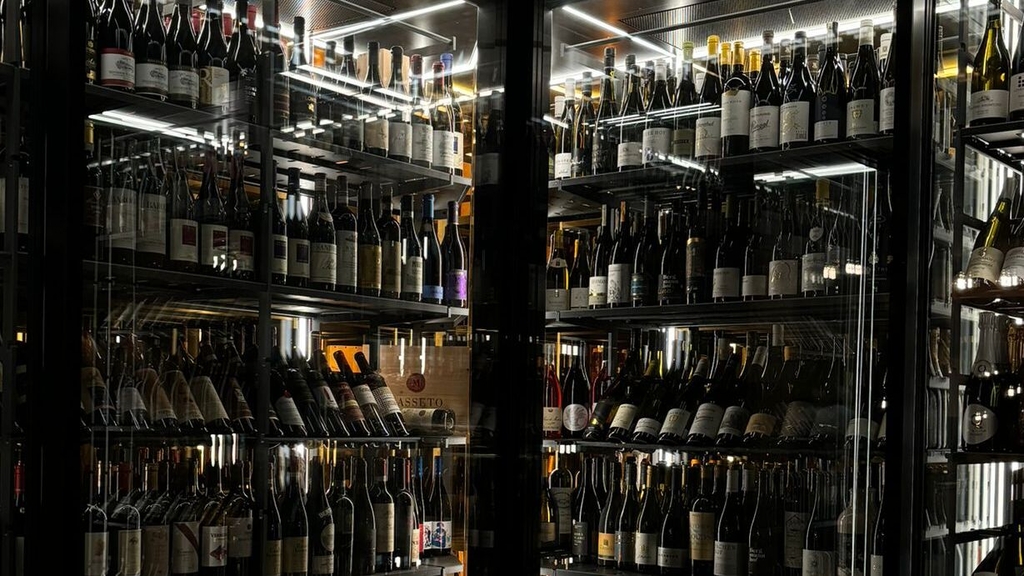6 Tips for Storing Wine
Essential Wine Storage Guidelines for Your Wine Cellar

Storing wine properly is crucial for preserving the quality and taste of a wine. Whether you are a wine collector or just want to keep a few bottles at home, there are some fundamental principles to consider. In this article, we provide a brief overview of what to pay attention to in order to store wines optimally.
1. Horizontal Storage
To keep wine well-preserved, the wine cellar must meet certain criteria. One of these is the horizontal storage of wine bottles.
It is common to find wine bottles standing vertically on shelves in regular households. This should be avoided, especially if wines are to be stored for a long time. With vertically stored bottles, the cork can dry out, potentially allowing air into the bottle and causing oxidation, which leads to loss of flavor and undesirable aromas.
Ideally, wine bottles should be stored horizontally - this keeps the cork moist and prevents it from drying out. A well-sealed cork results from this. An exception is wines with screw caps or synthetic corks, which can also be stored vertically. For beginners in the wine world: The risk of a wine tasting like cork (cork taint) is more likely due to a faulty cork (TCA contamination) rather than the storage method.
2. The Right Temperature
Depending on storage conditions, wine develops more or less quickly. One of the most important factors in wine storage is temperature. The key is to avoid extremes: too warm is not good – but too cold isn't either. So, what is the right temperature?
The ideal room temperature for wines intended for long-term aging is between 11 and 14°C (52-57°F). The recommendation to drink red wine at room temperature comes from times when people did not have central heating and lived behind thick walls. Most bottles can also be stored between 6 and 16°C (43-61°F). Cooler temperatures allow wine to mature best - that is, the slowest and safest.
More important than the exact temperature is temperature stability - fluctuations between winter and summer of more than 10°C (18°F) are not good for the wine in the long run. It would be better to store the wine at a constant 16°C (61°F) than with frequent changes between 8 and 14°C (46-57°F).
3. Ideal Humidity
Humidity in the cellar is particularly important to prevent the cork from drying out. Otherwise, the cork could shrink, allowing air to enter the bottle. Optimal humidity is at least 65%. While good corks do not shrink significantly in the first 25 years, this is truly the case only for high-quality corks. Similarly to temperature, humidity should not exceed 90-95%. Excessive humidity can lead to moldy corks and peeling labels. However, such high humidity levels are extremely rare.
4. Light Protection
In general: light is not good for wine. Wine should be protected from direct light, especially sunlight. UV rays can trigger chemical reactions in the wine, negatively affecting its taste and color. Simply put: light fades color over the years. Champagne, in particular, is sensitive to light exposure. Dark storage areas or wine refrigerators with UV protection are therefore ideal.
For short-term solutions, it is sufficient to store wine under the stairs or cover it with a cloth. The wine does not have to be perfectly dark, but the light should at least be subdued.

5. Odor and Ventilation
Good ventilation in the wine cellar is important to avoid musty odors that could affect the wine through the cork. It may sound odd, but strong odors can indeed penetrate the bottle through the cork. Therefore, wine bottles should be stored in an odor-neutral environment. Strong food odors, cleaning agents, or even car exhaust fumes can quickly impair the aroma and taste of the wine and should not be near the wine storage area. Even a damp box, where a bottle is left too long, can affect the wine's taste. This does not apply to bottles with screw caps - there is no oxygen exchange in those.
6. Wine needs Tranquility
Acoustic disturbances generally do not harm wine. However, if the noises are associated with vibrations or even shocks, the aging process of the wine is disturbed. For instance, this can be the case with conventional refrigerators that turn on and off repeatedly. Shocks and vibrations break molecules and disturb aromas. Wine needs peace while it ages. An optimal solution: wine refrigerators. These devices are specifically designed for wine storage and offer precise control over temperature and humidity. Wine refrigerators come in various sizes and price ranges, so there is something for every need and budget.
Pro-Tip: How Do Professionals Do It?
Wine cellars in many restaurants and hotels are already equipped with wine refrigerators or store wines in their own wine cellars, which are already well-suited to ensure optimal aging of the wine. Some wines, particularly high-quality reds and certain whites, benefit from a long aging period that can enhance their taste and complexity.
Proper wine storage requires a certain level of knowledge and care, but the reward is worth it. Check out this article for a comparison on what tools to use for your wine cellar.
Cheers 🍷

